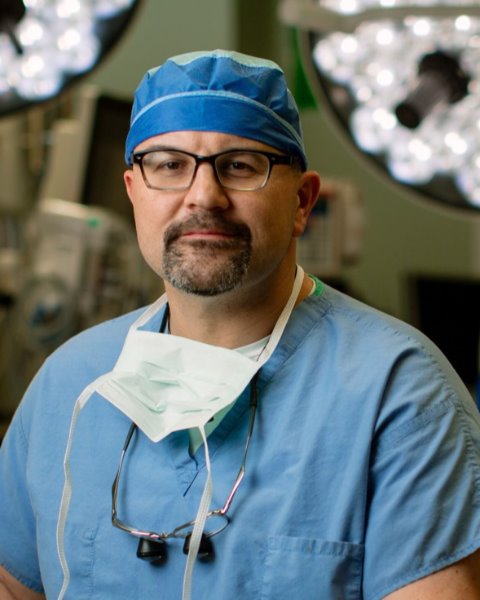Upper Gastrointestinal (lips to ileocecal valve, including esophagus and stomach)
E451: Impact of Neoadjuvant Chemotherapy on Sarcopenia in Gastric Adenocarcinoma

Jessica A. Steadman, MBBS
Surgical Resident
Mayo Clinic
Rochester, Minnesota, United States
Jessica A. Steadman, MBBS
Surgical Resident
Mayo Clinic
Rochester, Minnesota, United States
Jessica A. Steadman, MBBS
Surgical Resident
Mayo Clinic
Rochester, Minnesota, United States
Mark J. Truty, MD, MS
Professor of Surgery, Hepatobiliary and Pancreas Surgery Division Chair
Mayo Clinic
Rochester, Minnesota, United States- CT
Cornelius A. Thiels, DO, MBA
Assistant Professor of Surgery
Mayo Clinic
Rochester, Minnesota, United States - MK
Michael Kendrick, MD
Consultant
Mayo Clinic, United States 
Travis E. Grotz, MD
Associate Professor
Mayo Clinic, Rochester, MN, United States
Rochester, Minnesota, United States
ePoster Abstract Author(s)
Submitter(s)
Author(s)
Patients with locally advanced gastric adenocarcinoma (GAC) receive neoadjuvant chemotherapy (NAC) followed by gastrectomy. Sarcopenia is an established predictor of adverse post-gastrectomy clinical outcomes, however, the impact of NAC on the sarcopenia incidence in GAC patients is unknown.
Methods:
All GAC receiving NAC followed by gastrectomy at a single institution from 2018 to 2022 were retrospectively reviewed. Using a pre-validated automated algorithm for CT segmentation to quantify body composition, skeletal muscle index (SMI) was measured at the third lumbar vertebra and normalized to the patient squared height. SMI measurements were obtained before and after NAC. Sarcopenia was defined by SMI < 41 for females, and < 43 for males with BMI < 25 and < 53 if BMI ≥25. Post-operative major complications were defined as Clavien-Dindo grade ≥ 3a. McNemar’s test and paired t-test were used to compare pre and post NAC measurements. Overall survival (OS) and disease-free survival (DFS) were evaluated by Kaplan Meier. Cox proportional hazards modelling was used to assess independent factors associated with OS and DFS.
Results:
Among the 116 patients included the incidence of sarcopenia prior to initiation of NAC was 33.3%. Age, sex, tumor location, and clinical T stage were no different between patients with and without pre-NAC sarcopenia. After a mean of 6 ± 2 (SD) cycles of NAC, mean SMI significantly decreased (53.3 vs 50.3 in males, 41.9 vs 40.8 in females, both p < 0.001), and the rate of sarcopenia increased by 12% to 45.7% (p=0.04). In particular, the FLOT chemotherapy regimen was associated with a clinically but not statistically significant increase in sarcopenia (27.7% vs 42.3%, p=0.09). In contrast, sarcopenia did not change significantly in those receiving FOLFOX (42.3% vs 50.0%, p=0.60). Hospital LOS, reoperation, and 30-day major complication rate were similar in those with and without post-NAC sarcopenia (all p >0.05). At a median follow-up of 41 (IQR 22) months, median OS was similar between those with and without post-NAC sarcopenia (33 months vs 29 months, respectively, p=0.96). Similarly, median DFS was not influenced by sarcopenia (23 vs 24 months, p=0.59, figure). On multivariate analysis sarcopenia was not associated with OS or DFS.
Conclusions:
Following NAC, sarcopenia rates in GAC patients significantly increased, particularly after FLOT. Unlike investigations in Asia, we did not find that sarcopenia influenced perioperative or oncologic outcomes. Further research is needed to better understand the implications of weight loss, fragility, sarcopenia, and cachexia on gastric cancer outcomes.
Learning Objectives:
- Describe the impact of neoadjuvant chemotherapy on the incidence of sarcopenia in gastric adenocarcinoma patients undergoing surgical resection.
- Demonstrate an understanding that current data in Western populations is insufficient to use sarcopenia alone as a marker of worse perioperative outcomes in resected gastric adenocarcinoma patients.
- Describe the different effect of commonly used neoadjuvant chemotherapy regimens on the development of sarcopenia during neoadjuvant chemotherapy and prior to resection in gastric adenocarcinoma patients.
